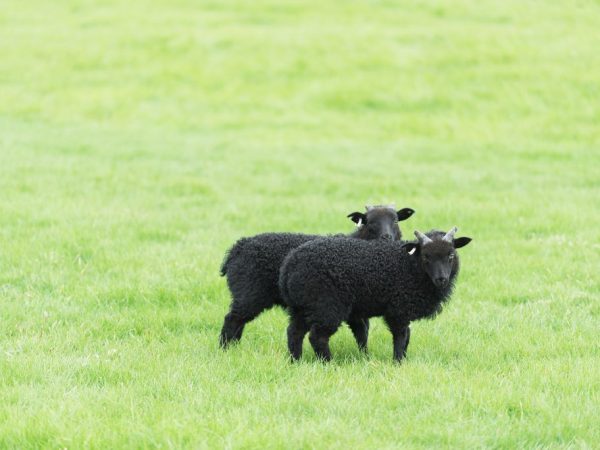Description of the sheep of the Karachaev breed
The Karachaevskaya breed of sheep was bred in the region of Karachay-Cherkessia. For rams, the presence of a rough neck is characteristic. Sheep produce a lot of high quality meat. Farmers appreciate the wool and the good milk yield that these animals bring. In addition, the breed shows a high level of disease resistance.

Sheep of the Karachaev breed
Appearance
Distinctive features of the Karachay sheep are as follows:
- Body folding. Sheep are quite strong, have strong hooves, so they easily and without obstacles move around the mountainous terrain.
- Representatives of this breed are small in size. The weight of rams is up to 75 kg, of females - 45–55 kg. These are average statistical data, which may differ, depending on the individual characteristics of the animal's body. Throughout the history of animal husbandry, farmers have grown individuals up to 90-100 kg. The body length of the lambs is 155 cm, the height at the withers is 55 cm.
- Sheep have a small elongated head. This breed is distinguished by large horns that are twisted and have the appearance of a spiral. The horns of females are smaller in size, directed upward.
- The tail is 50 cm and more resembles the English letter "S". The base is wide and large (fat tail fat accumulates). The coat is black, but there are individuals of other shades: gray and red. It is a coarse-haired breed, but the fleece is warm and light in weight.
In the cavity of the fat tail, useful substances accumulate. If rams have difficulty in getting good food, the nutrients come from fat.
Features of the
Karachay sheep have a high level of disease resistance. They are less susceptible to the penetration of bacteria and microbes. This is due to good nutrition and the intake of nutrients into the body. Sheep graze in the meadows of the Caucasian mountains, use selected grass in their diet. New generations have better health and better genes.
Today rams have become more resilient and tolerate harsh climatic conditions well.
The Karachay sheep do not develop pathological diseases of the lungs and limbs. On the Internet there are unique photos of intrageneric: Kabardinskaya, Ossetian and Circassian. Each variety has distinctive features.
Common varieties:
- Karamuz;
- Kekbash;
- Tumak.
Karamuse
These animals have a fairly light coat, which is soft and silky, the color is dark, often black. It shimmers beautifully in the sun, smooth and soft to the touch.
Kekbash
These sheep have become popular due to their size, excellent physique, and rapid weight gain. The coat is mostly gray-white, coarse but light.
Tumak
Animals have a huge amount of fluff. This type of breed has good meat with excellent palatability. The coat is predominantly black in color.
Productivity
Sheep of the Karachaev breed are known even outside their native area. Many people are familiar with these animals because of their delicious meat. Wool is used in a variety of industries. Karachay sheep give a lot of good milk.
Every year 3-4 kg of valuable wool is sheared from rams, and sheep give up to 3 kg.
The fleece is silky, light and pleasant to the touch. It contains 70% fluff, the rest of the components are hair. It can be used for sewing cloaks and insulated things. Manufacturers make high density felt. Farm owners cut animals no more than 2 times a year.
This breed is one of the mildest, unlike other fat-tailed varieties. The average daily milk yield is 2.5-3 liters. The fat content is about 10%. Farmers often keep early maturing Karachay sheep, which produce up to 100 lambs per hundred ewes. Gourmets appreciate lamb for its high taste. When cutting one carcass, the slaughter is up to 45%.
Value
Representatives of this breed are superior in many respects to individuals of other types of sheep. The following distinctive characteristics can be distinguished:
- lack of special conditions of detention;
- unpretentious care;
- good health, good offspring;
- resistance to cold and sudden changes in temperature;
- purebredness, thanks to which only positive qualities and excellent genes were transmitted to sheep;
- Several centuries ago, sheep lived far from people, so they learned to select only valuable and high-quality grass at the genetic level (they can independently provide themselves with adequate nutrition for development).
The only drawback of the Karachaevskaya sheep breed is living in areas that are characterized by the presence of a high level of moisture. They can only eat selected natural food. That is why farmers find it difficult to maintain in areas where the arid climate prevails.
Today, the Karachay breed of sheep is found not only in the territory of Karachay-Cherkessia, but also in such areas as Kabardino-Balkaria and North Ossetia.


